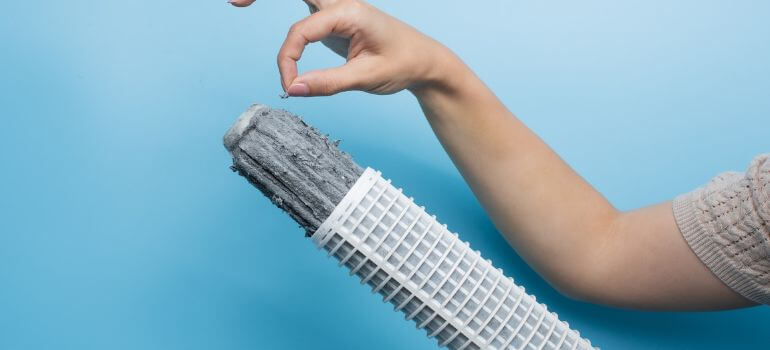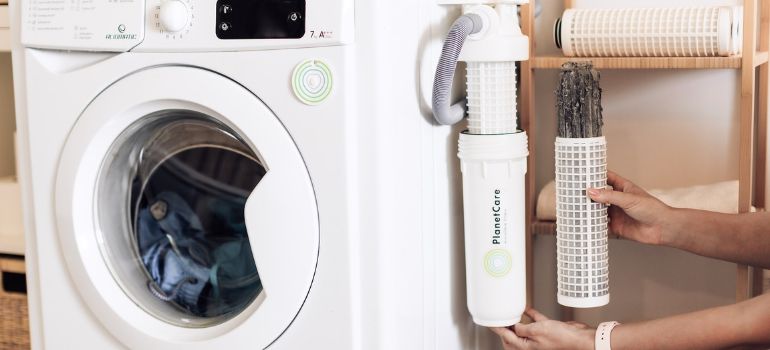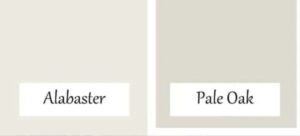Dryers play a crucial role in our daily lives, and one often overlooked component is the lint filter. Efficient lint removal not only ensures optimal drying but also extends the lifespan of your appliance. In this article, we’ll explore the differences between top and front lint filters, helping you make an informed decision for your home.
Understanding Dryer Lint Filters
Dryer lint filters are designed to trap lint and debris generated during the drying process, preventing them from clogging the vent or causing fire hazards. Regular cleaning is vital to maintain the efficiency of your dryer and reduce the risk of malfunctions.
Types of Dryer Lint Filters
Top Lint Filters
Top lint filters are conveniently located at the dryer’s upper edge, easily accessible for quick cleaning. Their design ensures efficient lint removal, and many users appreciate the simplicity of maintenance.
Front Lint Filters
Front lint filters, on the other hand, are positioned at the dryer’s door opening. While they may be less visible, their space-saving design is advantageous for compact laundry spaces.
Advantages of Top Lint Filters
Top lint filters offer several benefits. Their accessibility simplifies the cleaning process, making it a quick and hassle-free task. Additionally, their design often allows for larger filter sizes, enhancing lint capture efficiency.
Advantages of Front Lint Filters

Front lint filters, while less visible, contribute to a sleek and space-saving dryer design. Their positioning at the door opening facilitates easy access, and their compact nature makes them suitable for tight laundry spaces.
Maintenance Tips
Maintaining the top lint filter in your dryer is crucial to ensure optimal performance and prevent potential issues. Regular cleaning and proper care can extend the lifespan of your appliance. Here are essential maintenance tips for top lint filters:
1. Regular Cleaning
- Frequency: Clean the top lint filter after every use to prevent lint buildup.
- Procedure: Remove the filter from its housing and manually clear accumulated lint. Use a soft brush to gently dislodge any stubborn lint.
2. Inspect for Debris
- Frequency: Perform a thorough inspection weekly.
- Procedure: Check the filter housing for any debris or lint that might have escaped the filter. Remove any obstructions to maintain optimal airflow.
3. Use a Soft Brush
- Frequency: Incorporate this step into your regular cleaning routine.
- Procedure: Employ a soft-bristle brush to sweep away lint from both the filter and its housing. Ensure you reach corners and edges for a comprehensive cleaning.
4. Check the Filter Seal
- Frequency: Monthly check is recommended.
- Procedure: Inspect the seal around the filter for any signs of wear or damage. A proper seal ensures efficient lint capture, so replace the seal if necessary.
5. Vacuum the Housing
- Frequency: Every three months.
- Procedure: Use a vacuum cleaner with a nozzle attachment to thoroughly clean the interior of the filter housing. This helps remove any residual lint or dust that might have settled.
6. Inspect Ventilation System
- Frequency: Annually.
- Procedure: Check the dryer’s ventilation system connected to the lint filter. Ensure it is clear of any lint or obstructions. A clean vent enhances overall dryer efficiency.
7. Lint Filter Replacement
- Frequency: As needed or according to the manufacturer’s recommendations.
- Procedure: If the top lint filter shows signs of damage or wear that cleaning cannot resolve, consider replacing it with a new one. Always use the recommended filter type.
8. Monitor Drying Performance
- Frequency: Regularly assess the time it takes for your clothes to dry.
- Procedure: If you notice extended drying times, it might indicate a partially blocked lint filter. Take prompt action to clean or replace the filter to maintain efficiency.
9. Dryer Location
- Consideration: Ensure the dryer is in a well-ventilated space.
- Procedure: Adequate airflow around the dryer contributes to efficient lint capture. Avoid placing items on top of the dryer that may obstruct ventilation.
10. Educate Household Members
- Consideration: Share maintenance responsibilities.
- Procedure: Inform everyone in the household about the importance of regular lint filter maintenance. Encourage a collaborative effort to ensure the dryer operates smoothly.
Common Issues with Top Lint Filters
Despite their advantages, top lint filters may face common issues such as lint escaping the filter or difficulty in accessing the filter housing. To address these problems, ensure the filter is securely in place and inspect the housing for any obstructions.
Common Issues with Front Lint Filters
Front lint filters may encounter issues like restricted airflow or difficulty in closing the door. Check for lint buildup in the vent and ensure the filter is properly seated to resolve these problems.
Choosing the Right Dryer for Your Needs
When deciding between top and front lint filters, consider factors such as available space, ease of maintenance, and your laundry habits. Front lint filters may be ideal for compact spaces, while top lint filters offer easy access.
Consumer Reviews and Feedback
To provide a well-rounded perspective, let’s delve into what consumers are saying about top and front lint filters.
Top Lint Filters
- Positive Feedback: Users appreciate the ease of cleaning and efficiency in lint removal.
- Concerns: Some report occasional issues with lint escaping the filter.
Front Lint Filters
- Positive Feedback: Consumers highlight the space-saving design and modern aesthetics.
- Concerns: A few users mention challenges in accessing the filter for cleaning.
Environmental Impact
Considering the environmental impact of your appliance is crucial. Both top and front lint filters contribute to energy efficiency by preventing lint buildup in the vent, reducing the risk of overheating and fire hazards.
Industry Trends and Innovations
The world of dryer technology is constantly evolving. Recent innovations include sensor-equipped filters that notify users when cleaning is required and advanced filtration systems that capture even the finest lint particles.
Conclusion
In conclusion, choosing between top and front lint filters depends on your specific needs and preferences. Both options offer unique advantages, and understanding their features can help you make an informed decision for your home.
FAQs
It’s recommended to clean the lint filter after every use to maintain optimal dryer efficiency.
Using a dryer without a lint filter is not recommended, as it can lead to lint buildup in the vent, posing fire hazards.
Front lint filters require regular cleaning, but with proper maintenance, they are as easy to clean as top lint filters.
Most modern dryers come equipped with lint filters to ensure safe and efficient operation.
If you experience problems, refer to your dryer’s manual for troubleshooting tips. If issues persist, consult with a professional technician.



